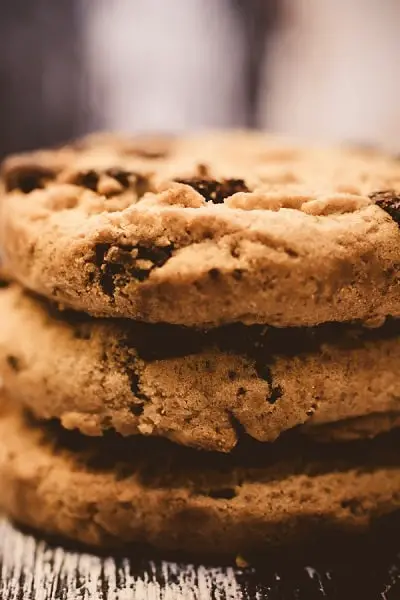How to Add Fiber to your diet without trying

We all have read or heard a lot about the importance of fibers in our food. At some point, we actually might have tried to increase the intake of fiber in our daily routine too. But if you are anything like me then until the body is not going through some serious issues, fiber in the food is not a high a priority.
But now when I am going through some serious physical issues and the crux of them is a healthy diet, I had to watch every single bite I take. So in the process of improving my diets, increasing the intake of fiber became a top priority.
First a bit about what are Fibers?
Fiber is a type of carbohydrate that the body can’t digest. Though most carbohydrates are broken down into sugar molecules, fiber cannot be broken down into sugar molecules, and instead, it passes through the body undigested. Fiber helps regulate the body’s use of sugars, helping to keep hunger and blood sugar in check. The Institute of Medicine recommends 38 grams per day for men and 25 grams for women but the real intake is pretty less than the required one.
Note: This post may contain affiliate links, which means if you buy from my link I might make a small commission. This does not affect the price you pay. See the full affiliate disclosure here.
From Harvard’s School of Public Health,
Fiber comes in two varieties, both beneficial to health:
- Soluble fiber, which dissolves in water, can help lower glucose levels as well as help lower blood cholesterol. Foods with soluble fiber include oatmeal, nuts, beans, lentils, apples and blueberries.
- Insoluble fiber, which does not dissolve in water, can help food move through your digestive system, promoting regularity and helping prevent constipation. Foods with insoluble fibers include wheat, whole wheat bread, whole grain couscous, brown rice, legumes, carrots, cucumbers and tomatoes.
The best sources of fiber are whole grains, fresh fruits and vegetables, legumes, and nuts.
Benefits of Fibers:
As mentioned Fibers helps to regulate blood sugar that in itself keeps many serious health issues at bay but some well-known and researched benefits of fibers include healthy heart, reduced chances of Breast and Colon Cancer, Decrease risk of Type 2 Diabetes.
Bowel movements are the core of our health, a fibre-rich diet helps to tackle constipation. Fiber full diet keeps weight in check.

How to add Fiber in our diet:
The best-researched advice I found is – “Increase fiber intake gradually rather than suddenly, and because fiber absorbs water, beverage intake should be increased as fiber intake increases.”
You can start adding 1 fiber rich food in your diet at one time and gradually increase them. Don’t forget to add the variety to keep the momentum going on. Here are some tips to add fiber to your diet without actually trying:
- Eat 1 apple or pear every day – Apple and Pear are a good source of pectin, a soluble fiber that contributes to a feeling of fullness and digests slowly. Research shows that pectin intake results in lower overall calorie intake and both fruits are full of pectin.
- Add Veggies in your food – The thumb rule is to finish veggies first from your food plate. Veggies like Carrots and Broccoli are the super-rich in fiber. 1 small intake can provide 5 grams of fiber that gives your feeling of a full tummy.
- Use Whole wheat Bread – Bread is a big part of our diet. So instead of using normal white bread use whole wheat bread. Wheat is a great source of Fiber. Try to find a whole wheat bread that specifies at least 4 grams of fiber in it.
- Nuts and popcorn – Like keeping snacks on your desk to munch. Replace the normal carbs with nuts like Almonds, Cashews and popcorns. Air-popped popcorn – a delicious snack food that’s also a healthy whole grain, has over a gram of fiber per cup.
- A bowl of Berries in Breakfast – Add your favourite berry into your breakfast.
- Replace one Refined Grain with Whole Grain every week – The whole grains are those that went through minimal processing leaving the grain intact and making them nutritious. Add oatmeal, brown rice to your daily diet. You can also choose Buckwheat, Farro, and Quinoa. Bake with whole-wheat flour.
- Eat fruits instead of drinking juice – The whole fruit has all the nutritious elements in it along with fiber while juice lacks all those elements.
- Plenty of Legumes – Include Plenty of Legumes in Your Diet – beans, dried peas and lentils are an important part of many traditional diets. They’re very rich in fiber, as well as protein, carbs, vitamins and minerals.

Don’t forget to drink plenty of water. An adult needs at least 8 glasses of water to help your digestion system process the fiber. As mentioned earlier don’t put all the fibers in your body in one go. Try 1 at a time, let your body get used to it and then add another and within a few weeks your diet will be full of fiber and your body will thank you in the long run. Have fun eating!!
Title Photo by Edgar Castrejon on Unsplash







